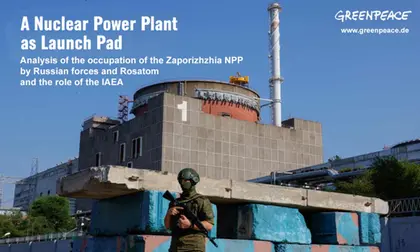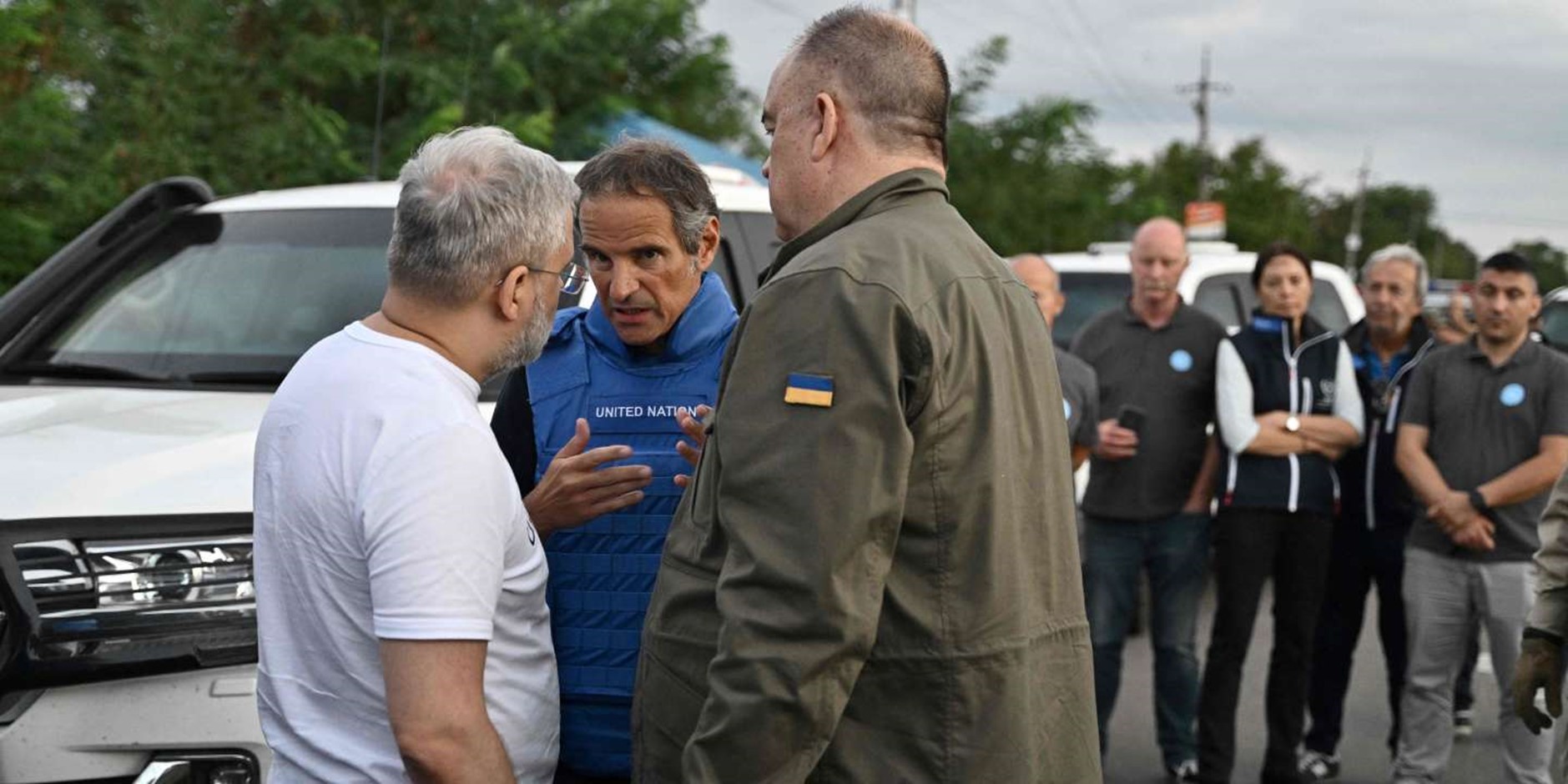Greenpeace Germany is warning that the situation is dangerous at Europe’s largest nuclear power plant – held in Russian-occupied Ukraine – and criticizes the UN’s Atomic monitoring agency for its handling of the situation.
The environmental group has today released a 50-page report authored by two nuclear specialists, Shaun Burnie and Jan Vande Putte on the situation at the Zaporizhzhia Nuclear Power Plant (ZNPP).
JOIN US ON TELEGRAM
Follow our coverage of the war on the @Kyivpost_official.
The environmental campaign group commissioned McKenzie Intelligence Services, a military analysis company, to carry out an assessment of the dangers posed by Russian armed forces operations at the ZNPP – which they seized in March 2022 and continue to occupy. On-site troops are supported by representatives of the Russian State Nuclear Corporation, ROSATOM.
The resulting report is entitled: “Analysis of the Russian Seizure and Ongoing Occupation of the Zaporizhzhia Nuclear Power Plant (ZNPP).”
Greenpeace claims that the report provides publicly for the first time a comprehensive evaluation of the multiple hazards and risks to the plant, its associated infrastructure, and the area surrounding the nuclear plant posed by Russian military operations.
It also warns that international regulators are unable to properly monitor the Russian-held site.
The report was prepared in advance of a debate on the nuclear situation in Ukraine which is scheduled to be held at the Oct. 2 annual General Conference and Board of Governors’ meetings of the International Atomic Energy Agency (IAEA). It has already been sent to the member governments of the IAEA Board.

Brace for 2028: EU Urged to Prepare for Potential Russian Aggression
Assessment of the Military situation at ZNPP
The ZNPP sits alongside the Dnipro River in central Ukraine. The site is vast and holds six nuclear reactors on site. The Ukraine Armed Forces (UAF) occupy the riverbank opposite the plant, which has remained firmly in the sights of both Russian and Ukrainian forces since the early days of Russia’s full-scale invasion.
McKenzie specialists studied satellite imagery produced from Planet Lab’s SkySat system collected between March 2022 and July 2023. This identified details of Russian military activity which confirmed the long-held belief that Moscow’s forces were using the Zaporizhzhia nuclear plant for strategic and tactical purposes. The military threat posed by the Russian presence not only puts the plant at risk but also the surrounding region, particularly the off-site electrical grid.
ZNPP is occupied by around 500 members of the Russian National Guard which is directly subordinate to the Russian presidency. Its chain of command is, therefore, separate from the Russian Ministry of Defense.
The occupying force is equipped with BTR-70 and BTR-80 armored personnel carriers, some with turret-mounted 30mm cannons, and armored urban patrol and mine-protected vehicles. Its logistics support is provided by an assortment of Ural and KAMAZ military utility trucks primarily used to transport essential equipment and consumables including weapons, ammunition, explosives, and troops.
The report also used geolocation to identify Russian military firing positions within range of the ZNPP. This identified several sites used by BM-21 Grad and BM-30 Smerch Multi-barreled Rocket Launchers Systems (MLRS), in lay-up positions within nearby settlements including the neighboring towns of Vodiane, Ivanivka and Dniprovka.
Several instances were recorded of these weapons being repositioned away from their lay-up sites to firing positions where they launch their rockets, after which they immediately move to avoid Ukrainian counter-battery fire. Instances were also identified where the artillery appeared to be relying on the proximity of the nuclear power plant to shield it from any Ukrainian response, in coordination with the ZNPP on-site troops.
The report says that there is nothing to suggest any recent substantial change in Russia’s posture in and around the plant and it must, therefore, be assumed that the threat to the ZNPP from the presence and actions of the Russian military forces remains high.
The report concludes in relation to the presence and activity of both the Russian military and ROSATOM that Moscow is in violation of the IAEA principles it signed up to at the UN Security Council (UNSC) in May 2023.
Actions of the IAEA
The report is particularly critical of IAEA efforts to monitor safety conditions at the ZNPP and concludes that the agency is currently “unable to meet its mandated requirements” to ensure on Russian compliance with the five principles laid down by the IAEA at the May UNSC meeting.
It says that the four on-site inspectors are insufficient to protect what is Europe’s biggest nuclear plant and that they have seemed to accept the many restrictions placed by the Russians on the team’s access, movement, and the requirement to provide advance notification of any planned inspections. It also asserts that the IAEA has not acknowledged the extent of these limitations in public, as a result of which “Russian violations of safety principles are not being called out.”
This was detailed further in an IAEA report in September which, Greenpeace said, demonstrated that the IAEA could not confirm compliance because of “Russian obstruction,” and accused it of “taking its commitment to neutrality too far.”
The report further indicates that reports and communiques to IAEA Board of Governors are unduly limited in scope, lack analysis, and places too much confidence on the claims and statements issued by the Russian military on-site.
Greenpeace feels that because of these shortcomings, the IAEA “risks normalizing what remains a dangerous nuclear crisis, unprecedented in the history of nuclear power while exaggerating its actual [ability to] influence events on the ground.”
In the wider context, the environmental group said that the robust position adopted by the IAEA Board on the Russian occupation of the ZNPP, has not been reflected in the actions of their member governments who have failed to take effective action against Russia which continues to participate in IAEA nuclear programs.
It was reported later on Thursday that the IAEA had declined to comment directly on the Greenpeace report but said it had deployed inspectors on site since September 2022, and that without their presence “the world would have no independent source of information about Europe’s largest nuclear power plant.”
You can also highlight the text and press Ctrl + Enter











